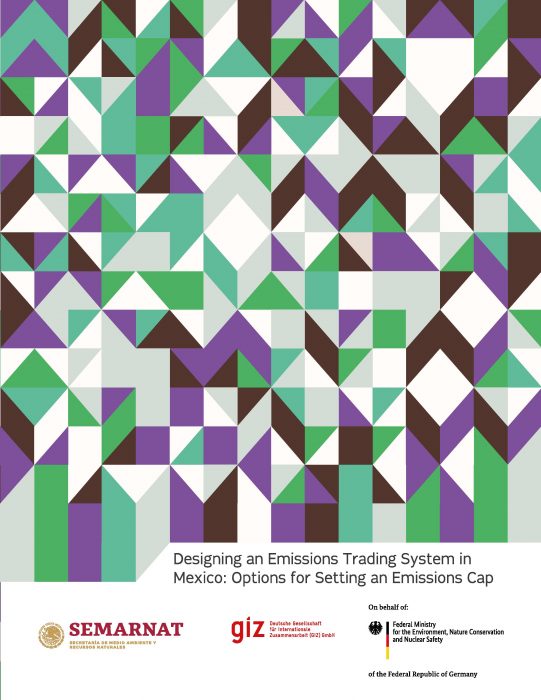The project “Preparation of an Emissions Trading System in Mexico” (SiCEM) publishes a novel and Mexico-specific study on the cap-setting alternatives in an Emissions Trading System (ETS), as part of an effort to provide solid technical recommendations to support a robust and cost-effective ETS in Mexico.
In light of the upcoming pilot phase of the Mexican ETS, which is set to begin in 2019, the GIZ project “Preparation of an Emissions Trading System in Mexico” (SiCEM) has been conducting a series of activities which include the development of technical studies to inform decision-making with regards to design of the Mexican ETS.
Acknowledging that one of the most fundamental steps in an ETS design is the cap-setting, a thorough study on the different cap-setting options for the Mexican ETS was developed. The resulting insights will support Mexican policy-makers’ decision-making. Also, a versatile cap-setting tool was created with built-in data from the Mexican Emissions Registry (RENE) and different cap design options. The tool is flexible enough to incorporate sectoral baselines, different emissions growth scenarios, and new inputs stemming from decisions taken by the government (e.g. emissions thresholds above which an installation will be covered by the ETS).
Taking as a basis an absolute cap, different ambition levels and emission reduction pathways have been analysed. The ambition refers to the tons of Greenhouse Gas (GHG) emissions that must be mitigated by a certain deadline. Mexico already defined –in its Nationally Determined Contribution (NDC)– two ambition levels to be met by 2030, an unconditional target and a more ambitious reduction target conditional to international support. The reduction pathways relate to how these 2030 reduction targets will be achieved: should all mitigation efforts be done today, with nothing left to do for the rest of the decade? Or could reductions be attained in a gradual manner, say with an annual linear reduction factor? Are there any other alternative pathways?

Setting the cap in a way that allows the instrument to meet its goal of cost-effective mitigation requires certainty in actual emissions data and sectoral growth projections. Given this is rarely –if ever– the case, safeguards and term flexibility mechanisms were also incorporated into the study, including as well short-term flexibility mechanisms to be resilient in the face of unexpected shocks such as an economic crisis or a spike in fuel prices.
The upcoming pilot phase provides with an opportunity to test the Mexican ETS design. The present study covers one of the key elements of this design. Additional studies covering a variety of technical issues be published in the “IKI Alliance Mexico” blog in the coming months.
For more information, please contact us at: Comercio.Emisiones-MX[AT]giz.de
Click on the image below to download the publication:

